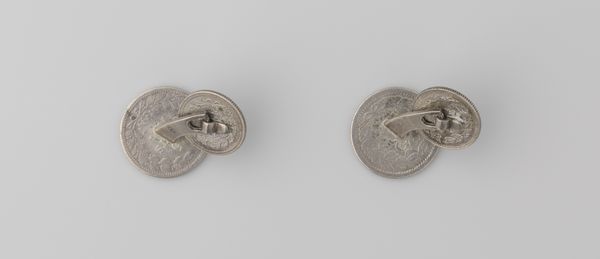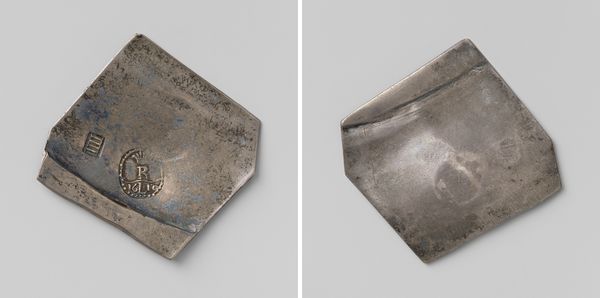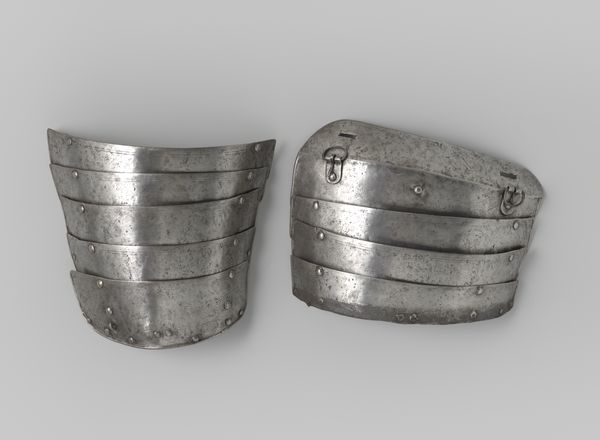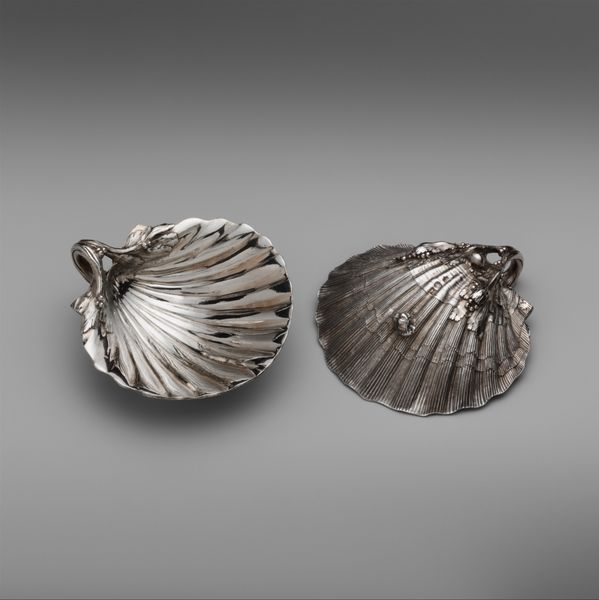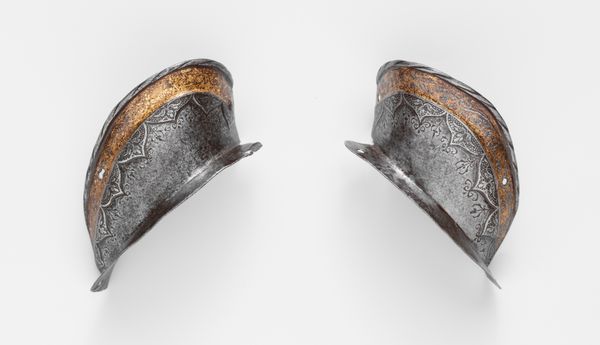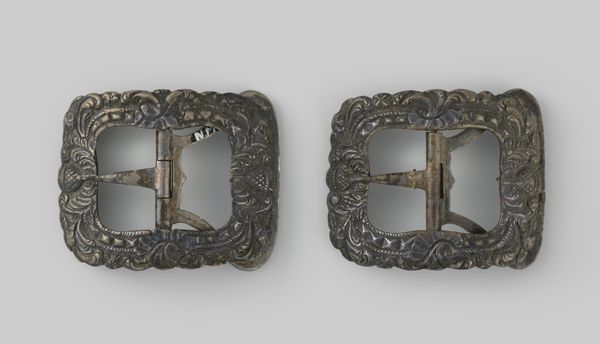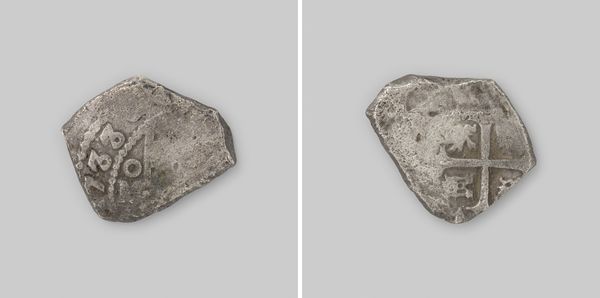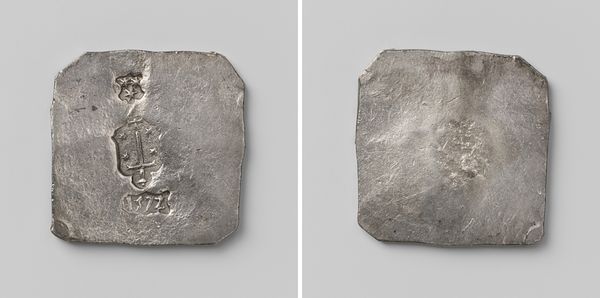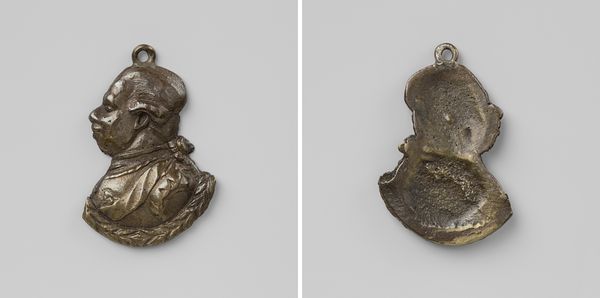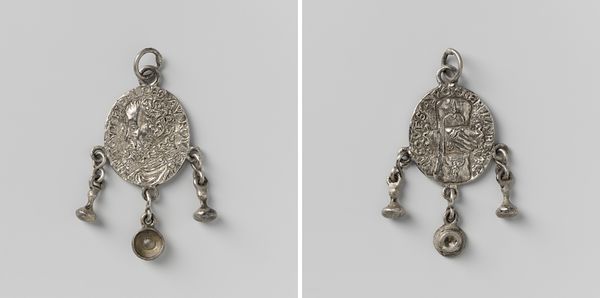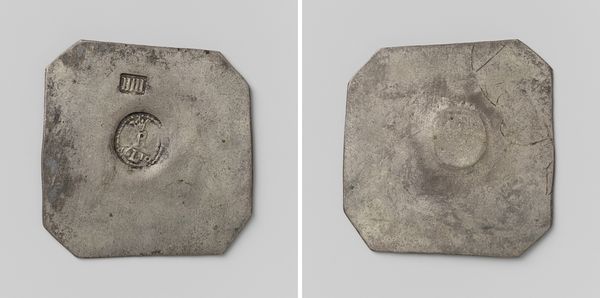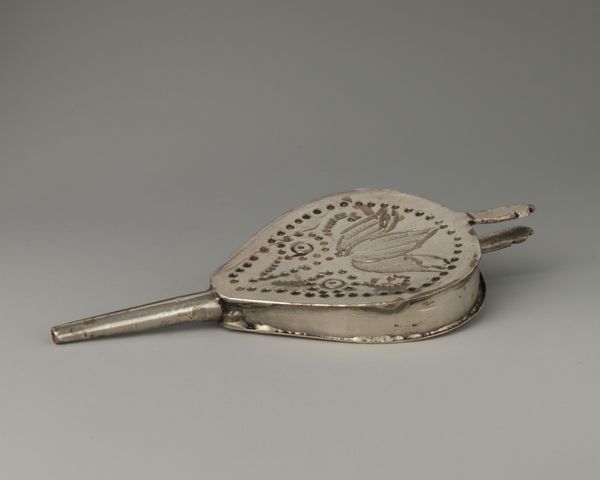
metal, sculpture
#
metal
#
asian-art
#
japan
#
sculptural image
#
3d shape
#
geometric
#
sculpture
#
armor
#
decorative-art
Dimensions: H. of each 10 in. (25.4 cm); L. of each 11 1/4 in. (28.6 cm); W. of each 5 1/4 in. (13.3 cm); Wt. of each 5 lb. 6 oz. (2438 g)
Copyright: Public Domain
Curator: Looking at these stirrups, created in 18th-century Japan, I am immediately struck by how they transform a purely functional object into a showcase of artistic skill. They reside here at The Metropolitan Museum of Art. Editor: My first impression is just how incredibly ornate they are. You wouldn't necessarily expect so much attention to detail in something used for riding, would you? Curator: Indeed! This particular pair, crafted from metal, reveals the intricate labor involved. The repeated wave patterns are carefully worked into the surface; it’s about controlling the material and transforming it to something beautiful. Editor: Considering the time, these stirrups weren’t just practical equipment, but statements of status and power. The very act of embellishing functional items like these speaks to a society that valued artistry even in martial contexts. Curator: Exactly. Think of the metalworking traditions of Japan – the forging, the inlaying, the techniques handed down through generations. These stirrups embody a specific level of craftsmanship from the period. Who would have been crafting them and for whom? Editor: Well, Samurai culture at the time definitely shaped artistic production and consumption. Aristocrats and powerful clans commissioning decorative armor amplified a cycle where artistry and wealth merged together. It brings questions about who made these and under what constraints or creative freedoms. Curator: Good points. And seeing them displayed now, detached from their original function, the question then becomes about how our contemporary museum system continues to recontextualize functional items, elevating craft into "high art." Editor: It also makes us consider our relationship with war implements themselves. Exhibiting these highlights artistry, perhaps even distracting us from reflecting more deeply on martial history and power structures involved during that time. Curator: Yes, by shifting them to the pedestal we potentially glorify it, or on the other hand it makes people stop and reconsider armor, military and Japan during the 18th Century, for instance. Editor: Overall, a simple glance reveals a functional, ornate item but further exploration yields more profound questions regarding material transformation, artistic production, patronage, and the presentation of history. Curator: Indeed. A pair of metal stirrups becomes a lens through which we can examine artistry, power, society, and ourselves.
Comments
No comments
Be the first to comment and join the conversation on the ultimate creative platform.
